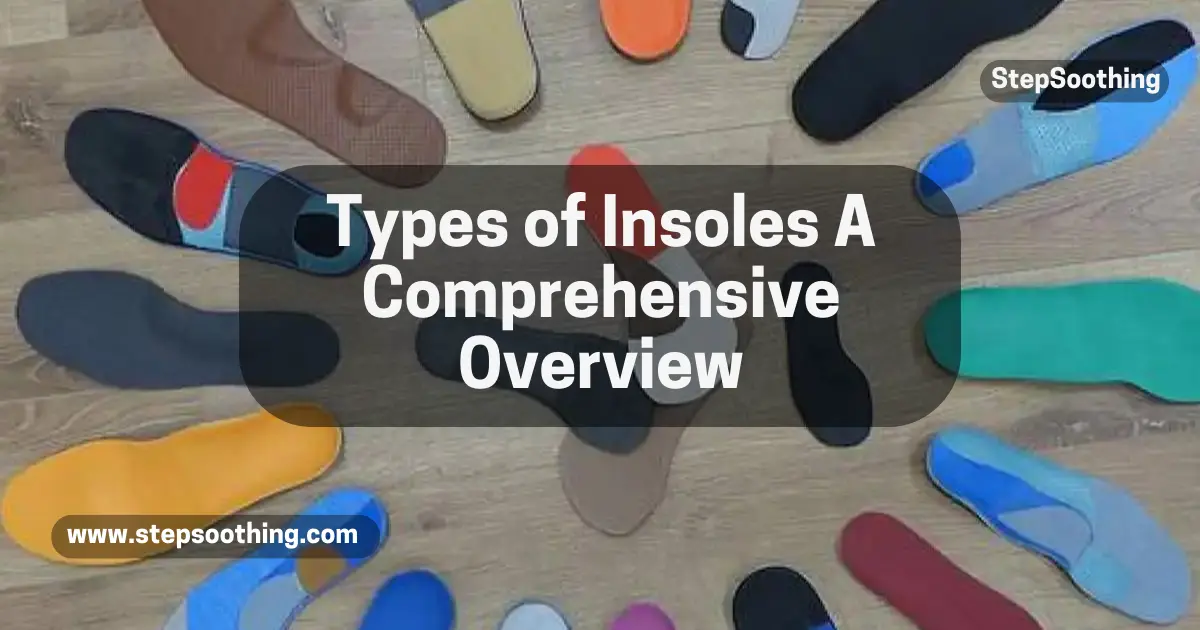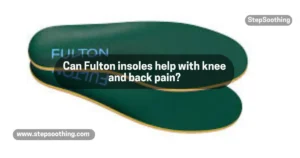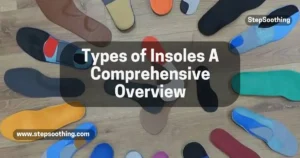Hey there, ever wondered about those magical inserts that make your shoes feel like heaven? Well, you’re in for a treat because we’re diving deep into the world of insoles! These nifty little things can turn your uncomfortable shoes into clouds for your feet. So, what exactly are insoles? In a nutshell, they are those supportive layers you place inside your shoes, adding an extra cushion and a dash of comfort. But, oh boy, they are so much more than that!

Perfect Insoles for Shoes
Benefits of Using Insoles
Picture this: you’ve had a long day on your feet, and they’re aching like nobody’s business. That’s where insoles come to the rescue! These foot saviors offer a plethora of benefits, starting with the heavenly comfort they provide. Slip them into your shoes, and voila! You’ll feel like you’re walking on air.
But wait, there’s more! Insoles aren’t just about comfort; they are foot heroes. They provide that much-needed support for your arches, ensuring your feet don’t tire out as easily. Say goodbye to those pesky foot pains! Additionally, insoles can prevent injuries by offering stability and cushioning. They also tackle the stinky feet dilemma by keeping moisture and odors at bay.
Plus, they play a significant role in improving your posture and alignment. It’s like having a personal foot masseuse with you all day long!
Types of Insoles
Now that you’re all excited about insoles, let’s explore the different types available in the market.
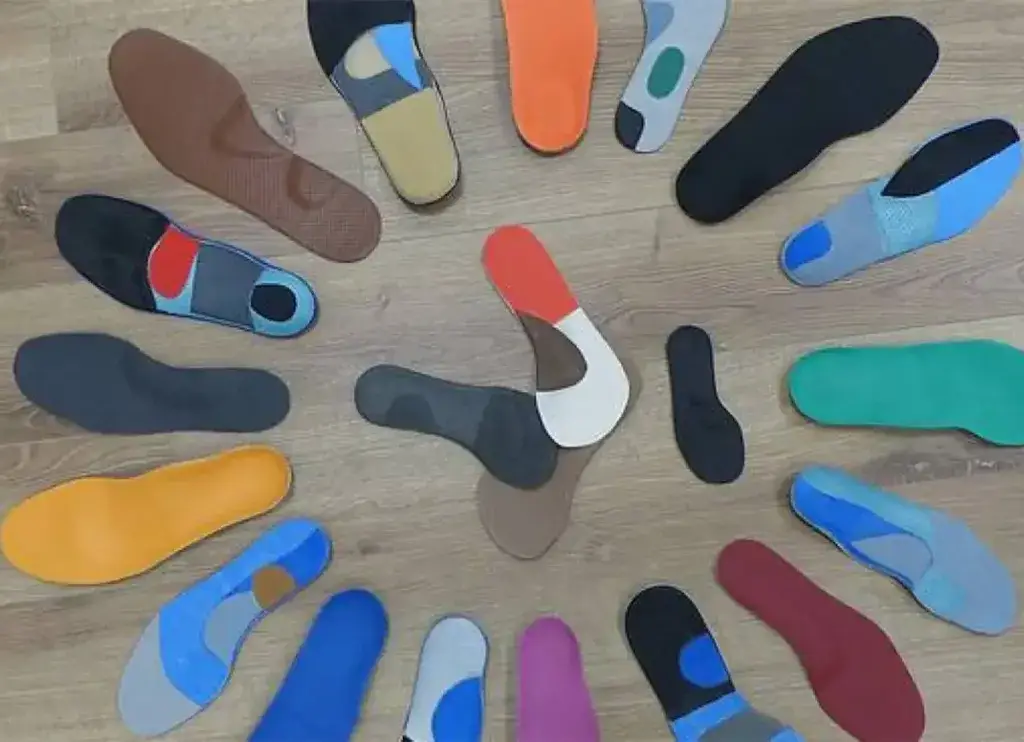
A). Orthotic Insoles
Orthotic insoles are like the superheroes of the insole world. They come in two flavors: custom-made and over-the-counter. Custom-made ones are crafted just for your feet, addressing specific issues like plantar fasciitis and flat feet. On the other hand, over-the-counter options are more generic but still offer fantastic support. They are your go-to choice if you’re looking for reliable comfort and relief from foot conditions.

B). Arch Support Insoles
Ah, arch support insoles, the unsung heroes of foot support! These come in various shapes and sizes to cater to different foot arch types: high, medium, and low. If you’re not sure about your arch type, fear not! Many insoles are designed to fit all arch shapes, ensuring everyone gets the support they deserve. These insoles are like a warm hug for your feet, cradling them in all the right places.
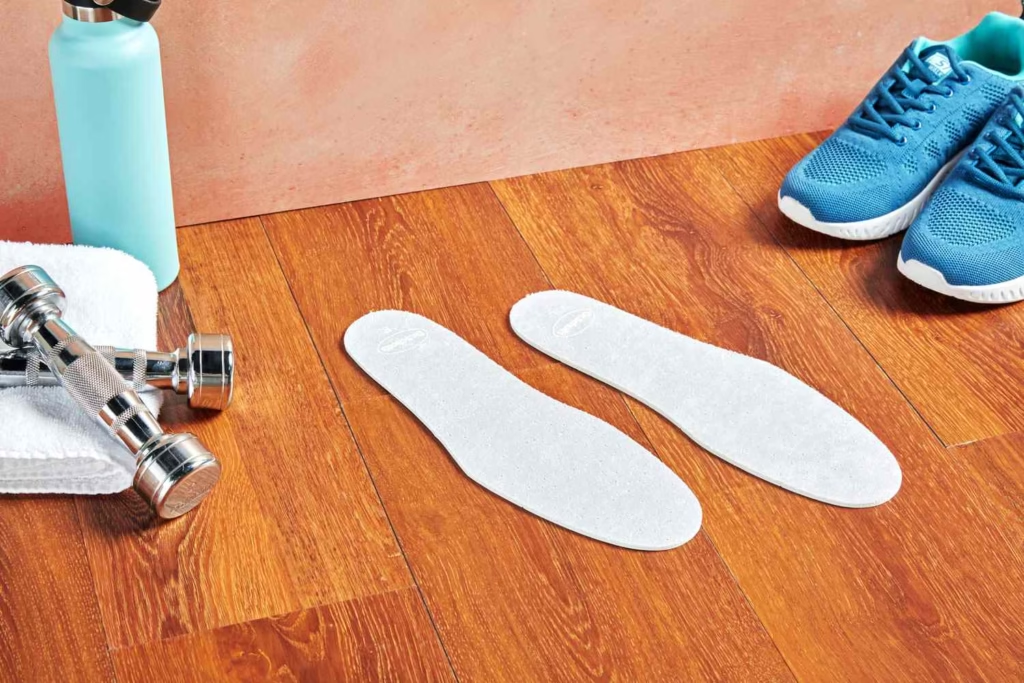
C). Cushioning Insoles
Imagine stepping on clouds every time you take a step. That’s the magic of cushioning insoles! These babies are made from gel, foam, or memory foam, offering unparalleled comfort. They are the perfect choice if you’re on your feet all day or love indulging in long walks. Cushioning insoles absorb the impact of each step, making your feet feel like royalty. No more soreness, no more discomfort—just pure, heavenly cushioning.
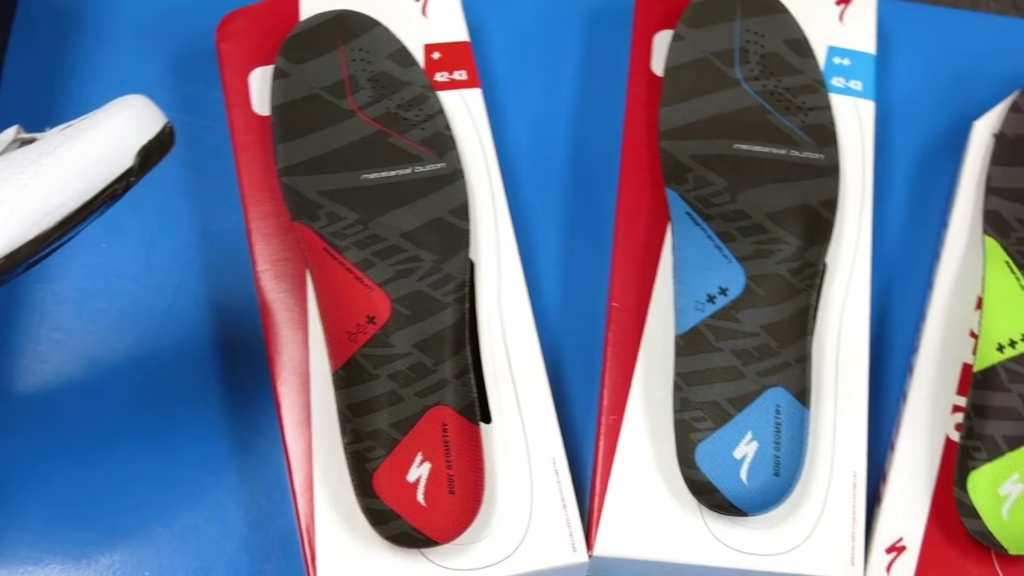
D). Specialized Insoles
Specialized insoles are like the chameleons of the insole world; they adapt to your needs. Whether you’re a sports enthusiast, a hardworking professional, or someone who loves a leisurely stroll, there’s a specialized insole just for you. Sports and athletic performance insoles are designed to enhance your game by providing extra support and shock absorption. Work and safety insoles prioritize durability and protection, making them ideal for demanding work environments. Whatever your lifestyle, there’s a specialized insole waiting to make your feet happy.
How to Choose the Right Insoles
Choosing the perfect insoles might sound overwhelming, but fear not! We’ve got your back (or rather, your feet). The key is understanding your feet and your specific needs.
A). Foot Type Analysis
First things first, let’s figure out your foot type. Are you flaunting flat feet, high arches, or something in between? Knowing your foot type is the first step to finding the ideal insole. Flat feet need extra arch support, while high arches crave cushioning. If you’re somewhere in the middle, you’ll benefit from a balanced insole that provides both support and comfort.
B). Understanding Specific Foot Conditions
Got a foot condition that’s been bothering you? Insoles can come to your rescue. Conditions like plantar fasciitis, bunions, and heel spurs require specialized support. Orthotic insoles are your best bet here; they are customized to address specific foot issues. Consult with a healthcare professional or a podiatrist to determine the right insole for your condition.
C). Consideration for Activity Level
Are you a fitness enthusiast who loves running marathons, or do you spend long hours on your feet at work? Your activity level plays a vital role in choosing the perfect insoles. Athletic activities demand insoles that provide excellent shock absorption and support. Gel or memory foam insoles are excellent choices for athletes. If you’re working in a labor-intensive job, invest in work and safety insoles that offer durability and protection. For everyday use, cushioning insoles are your best friends, ensuring your feet stay comfortable throughout the day.
D). Fitting and Sizing Guidelines
One size does not fit all when it comes to insoles. Make sure to choose the right size that fits snugly into your shoes. Insoles that are too big or too small won’t provide the support and comfort your feet deserve. Follow the sizing guidelines provided by the manufacturer, and if you’re in doubt, don’t hesitate to reach out to customer support for assistance. A well-fitted insole can make a world of difference in how your feet feel.
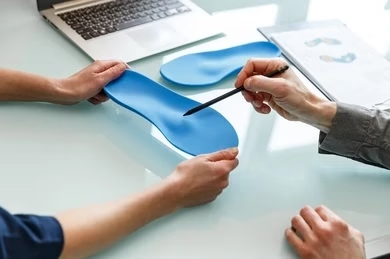
Proper Maintenance and Care
Congratulations on finding the perfect insoles for your feet! Now, let’s talk about how to keep them in tip-top condition.
A). Cleaning and Deodorizing Techniques
Insoles work hard to keep your feet comfortable, so it’s only fair to give them a little TLC in return. Regular cleaning is essential to maintain their effectiveness. Most insoles can be wiped clean with a damp cloth. Avoid soaking them, as excessive moisture can damage the materials. To tackle odors, sprinkle a bit of baking soda on your insoles and let them air out overnight. Voila! Fresh-smelling insoles ready for action.
B). Replacement Timeframes
Insoles aren’t immortal, unfortunately. Over time, they will wear out and lose their magical touch. It’s essential to keep an eye out for signs of wear and tear. If you notice flattened cushioning, reduced support, or visible damage, it’s time to bid adieu to your old insoles and welcome a new pair into your life. On average, insoles last about six months to a year with regular use. However, frequent use or high-impact activities might necessitate more frequent replacements.
C). Storage and Protection Tips
When you’re not wearing your insoles, store them in a cool, dry place away from direct sunlight. Avoid leaving them inside your shoes for an extended period, as trapped moisture can lead to unpleasant odors and deterioration. If you have multiple pairs of insoles for different shoes, consider rotating them to extend their lifespan. By taking good care of your insoles, you’re ensuring they stay fresh, supportive, and ready to make your feet happy whenever you slip them into your shoes.
Common Misconceptions about Insoles
Insoles, despite their incredible benefits, often fall victim to misconceptions. Let’s debunk some of the myths and set the record straight.
A). Myth Debunking
Myth: “Insoles are Only for People with Foot Problems” Reality: Insoles are for everyone! Whether you’re an athlete aiming for peak performance or someone who wants extra comfort during daily activities, insoles are your allies. They prevent foot problems, enhance comfort, and promote overall foot health. Don’t wait for foot pain to strike before considering insoles; they are proactive foot care at its best.
B). Clarifying the Role of Insoles in Foot Health
Insoles aren’t just a quick fix for foot pain; they are an investment in your foot health. By providing proper support and cushioning, insoles can prevent a myriad of foot problems. They align your feet correctly, distribute pressure evenly, and absorb shocks, reducing the strain on your feet. So, the next time you slip on a pair of insoles, know that you’re not just adding comfort; you’re actively promoting the well-being of your feet.
Conclusion
Insoles are much more than just shoe accessories; they are transformative tools that bring unparalleled comfort, support, and health benefits to your daily life. From alleviating foot pain and preventing injuries to improving posture and enhancing athletic performance, insoles cater to a diverse range of needs. Whether you choose orthotic, cushioning, or specialized insoles, investing in the right pair can make all the difference. Take care of your insoles, and they will take care of you—every step of the way.
Bullet Point Summary: Key Takeaways About Insoles
- Purpose of Insoles: Enhance comfort, provide support, reduce pain, and improve foot health.
- Types of Insoles:
- Orthotic Insoles: Custom-made or over-the-counter for specific foot issues.
- Arch Support Insoles: Tailored to high, medium, or low arches.
- Cushioning Insoles: Offer shock absorption with materials like gel or memory foam.
- Specialized Insoles: Designed for athletes, professionals, or unique needs.
- Benefits:
- Reduce foot fatigue and prevent injuries.
- Improve posture and body alignment.
- Address foot conditions like plantar fasciitis, bunions, and heel spurs.
- Control moisture and odors for freshness.
- Choosing the Right Insoles:
- Assess foot type (flat, high arch, or neutral).
- Match insoles to your activity level (athletics, work, or daily use).
- Ensure proper fit and size for maximum effectiveness.
- Maintenance Tips:
- Clean regularly and deodorize with baking soda if needed.
- Replace every 6–12 months or when showing signs of wear.
- Store in a cool, dry place and rotate pairs to extend lifespan.
- Common Misconceptions:
- Insoles are beneficial for everyone, not just those with foot problems.
- They are a proactive measure for foot health and injury prevention.
- Additional Benefits:
- Enhance athletic performance and reduce strain during high-impact activities.
- Promote better posture by aligning feet and evenly distributing pressure.
Insoles are an investment in comfort and health, designed to keep your feet happy and pain-free with the right care and selection.
People Also Asked
How long do insoles typically last?
Insoles usually last about six months to a year with regular use. However, their lifespan depends on factors such as frequency of use, activity level, and proper maintenance.
Can insoles be transferred between different pairs of shoes?
Yes, insoles can be transferred between shoes, especially if they are of the same size and shape. However, make sure they fit well in the new shoes to provide adequate support and comfort.
Can insoles help with foot pain caused by standing for long hours?
Absolutely! Insoles designed for comfort and support, such as cushioning insoles, can significantly alleviate foot pain caused by standing for extended periods. They provide extra cushioning and shock absorption, making long hours on your feet much more manageable.
Are there insoles specifically designed for athletes?
Yes, there are specialized insoles tailored for athletes. These insoles offer enhanced support, shock absorption, and stability, catering to the unique needs of individuals engaged in sports and high-impact activities.
Can insoles help improve my posture?
Yes, insoles play a significant role in improving posture. By providing proper support to your feet, they help align your body correctly, reducing strain on your muscles and promoting better posture.
Are You Curious to Learn More About Insoles?
If the world of insoles piques your interest, there’s a wealth of resources waiting for you! Check out some insightful blogs to explore everything from how to choose the right insoles to the amazing benefits they offer. Whether you’re looking for guidance on proper care and maintenance or intrigued by how science supports insoles as a remedy for knee discomfort, these articles are perfect for enhancing your insole knowledge. Dive in and discover how these foot-friendly tools can transform your comfort and health!
Learn more:
- The effectiveness of shoe insoles for the prevention and treatment of low back pain: a systematic review and meta-analysis of randomised controlled trials – PMC
- The arch support insoles show benefits to people with flatfoot on stance time, cadence, plantar pressure and contact area – PMC
- The Science Behind How Custom Insoles Can Improve Your Athletic Performance – The Shoe Doctor
